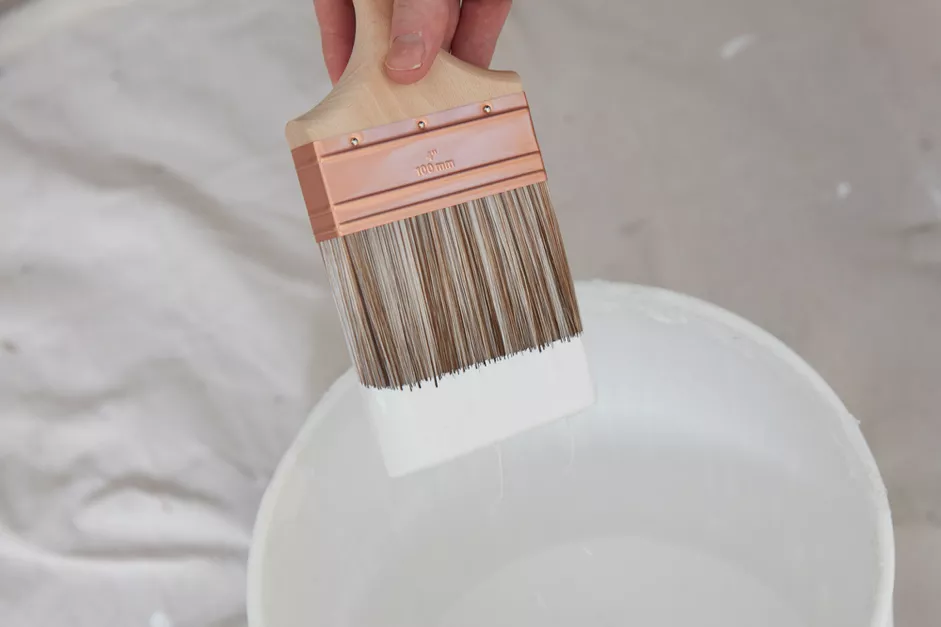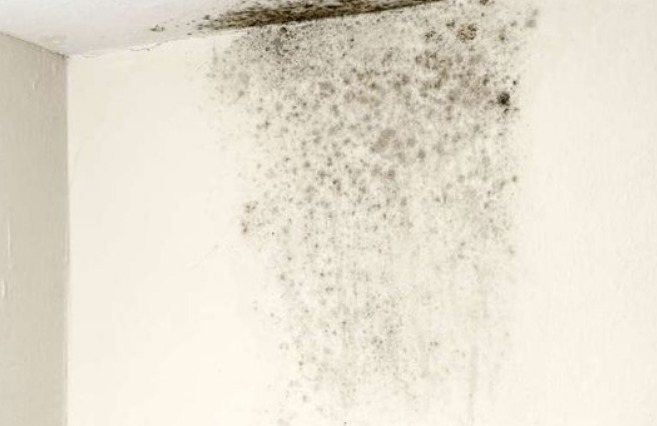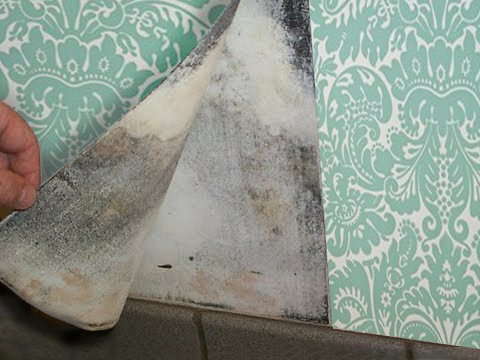It can be a tedious task for homeowners to prevent the growth of mould on their house walls. Mould does not go away easily, and even after deep cleansing the walls, it can regrow again. To save homeowners the hassle of taking constant precautionary measures, manufacturers have come up with anti mould paint colours that help save time and effort. However, many people are still dubious about whether these paints actually work or not. In this blog Graana.com, Pakistan’s smartest property portal has come up with a complete guide to anti mould paint colours.
What Causes Mould to Grow On Walls?

Before we jump into solutions for preventing the growth of mould, it is important to understand what is its origin and what are the factors that affect its growth.
We often witness that mould is grown on houses that are located in damp areas, or where the sunlight can not reach. Lack of sunlight leaves moisture to accumulate in the area or atmosphere, which ultimately sprouts the mould.
Moreover, if the house or the residential unit has any leakage in drain pipes or ceilings, it might lead to the formation of damp spots in the house, which can also be the cause of mould.
What is an Anti Mould Paint Colour?

The components of every anti mould paint colour vary based on their manufacturing brand, however, the main component that is used in most of them is a chemical named benzisothiazolone, which fights against mould formation.
This chemical is both microbicides as well as fungicide, which enhances its value as an anti mould paint colour.
Here is a brief description of both of these components.
Microbicide
Microbicide is any element that is designed to work against bacteria and viruses. They not only kill them but also prevent them from regrowing.
Fungicide
Fungicide is any chemical compound that targets fungus and its spores. It is composed of benzisothiazolone, which helps inhibit the growth of mould.
Are These Chemicals Hazardous?
You have to take a few precautionary measures before using benzisothiazolone. The chemical can be quite lethal if consumed.
Some of the commonly known side effects of benzisothiazolone allergic reactions include irritation in eyes and skin. One of the most severe forms of these allergic reactions is dermatitis (ACD). The symptoms include rashes, redness, and itching blisters.
However, the symptoms can subside once you remove the allergen, and might reappear again in case you get in contact again with the allergen.
Things You Should be Worried About
The side effects of the chemical benzisothiazolone mentioned might sound daunting, however, it is found in various other materials that we use on a regular basis such as detergents, stain removers, fabric softeners, and inks.
Furthermore, most of the paints which do not overtly list their anti mould properties contain this chemical. In about 20% of all the emulsion paints on the market, you will find benzisothiazolone as an ingredient.
So, in the light of this information, one can easily deduce that they have already come in contact with benzisothiazolone. Even though the chemical is being used at a large scale in numerous products, the bright side is that it is used in a very low quality, which lowers chances of any possible allergic reactions.
How Efficient are Anti Mould Paint Colours?

Removing the mould through DIY techniques is not easy, as it is known for regrowing even after years of careful methods used to avoid it from resprouting. Hence, due to the stubborn nature of house mould, people have doubts in their minds about the efficiency of anti mould paint.
Contrary to common belief, anti mould paint colours does work. However, if that particular area/space in your house is frequently exposed to moisture/water and is not dried, ventilated, or given proper access to sunlight, it will directly affect the effectiveness of the paint.
Another thing that you should keep in mind is that all biocides have a certain age and they lose their effectiveness after that certain period. This means that you can’t expect to coat your mould-ridden wall with anti mould paint once.
Most manufacturing brands come with a 5-6 years guarantee of the fungicides within the paints, so, as a homeowner, you are supposed to reapply the paint after every 5 or 6 years.
That being said, you can not expect anti mould paint colour to work like a magic wand and remove all the mould once and for all.
How To Apply Anti Mould Paint Colour?

How you apply anti mould paint colour varies depending on which paint you opt for, however, these are the steps that you commonly follow during the process of painting:
- Preparation
- Painting
Things Needed for the Process
- Paint
- Masking tape
- Dust sheet
- Mould killing cleaner
- Cloth
- Paintbrush
- Medium-pile roller
- Paint tray or kettle
- Filler (if required)
Steps To Apply the Paint
Following steps should be taken to paint your house effectively.
Step 1: Preparation
Before you start painting, it is essential to prepare the surface that you are going to paint. Never skip this part, take your due time and make sure you do it well.
First of all, make sure the surface is clean and dry, and there is no dust that will weaken the adhesive properties of the paint. For example, if there are parts of the wall where the paint is falling, clean them properly, and maybe use a scraper or brush for deep cleansing.
Remember, you can never paint over the grown mould, so the first thing you are supposed to do is to remove the visible patches of mould from the surface using any cleaning solution.
Use hot soapy water to remove the top layer of mould, then spray the cleaning solution and let it dry. Once it dries, you might want to fill any patches in the wall with cement or probably some other suitable filler and leave it for some time until it dries.
The final step is to use a dust sheet, old newspapers, or masking tapes to prevent the floor and other stuff from getting paint stains.
Step 2: Painting
Now, the second step is the main part of the process i.e painting. You can start off with painting the first coat of paint around the edges of the area. Once completed, you can go on to paint the rest of the area.
After application of the first coat, let it dry and set in for some time. You can check the manufacturer’s instructions on how much time to wait between the coats.
You can repeat the same process with the second coat of anti mould paint. Once it dries, you can seal the painted surface with two coats of any emulsion paint.
Is Anti Mould Paint The Same as Anti Condensation Paint?
There is no definite boundary between what can be considered a condensation paint and an anti mould paint. Lots of anti mould paints come with water repellent features, while some of the anti-condensation paint colours feature fungicide and biocide.
This being said, their effectiveness varies. For example, some anti mould paints claim to be water repellent but they themselves are water-based so they can resist moisture and water to some extent only. True anti-condensation paint colours are latex or oil-based, which makes them highly resistant against water.
Can You Put Wallpaper Over Anti Mould Paint?

One of the common questions that people ask is whether they can apply wallpaper over the anti mould paint or not. You can definitely apply wallpaper over the treated wall, however, it will have a drastic impact on the effectiveness of the anti mould paint’s properties.
Wallpapers tend to absorb moisture and lock it against the surface of the wall, providing the ideal habitat for fungus to grow. Hence, it is better to not use wallpapers in areas that are mostly damp and have less exposure to moisture, and water, like the bathroom and kitchen.
How to Prevent Mould Coming Back?
Now that you have treated the area with the anti mould paint colours, you still need to be cautious about not letting it regrow.
Determine the root cause of mould growth and make sure to treat that first. For example, if the mould was sprouting due to the leakage of water, or lack of ventilation, try to treat those problems first.
Sometimes, there’s no issues like water leakage or dampness, but moisture still retains. This can be due to retained humidity because of cooking, bathing etc., especially during winters. Make sure to properly ventilate your house to not let any moisture or dampness accumulate inside the structure.
You can take a few simple steps like turning the exhaust on while showering and opening the bathroom window for ventilation, and for the kitchen, a dehumidifier will help you remove the accumulated moisture from the air.
For people living in areas where sunlight does not reach frequently, buying a hygrometer will be a good choice, as it will measure the moisture level in the air for you. As per the general rule, the optimum humidity in your home should be around 50-55%.
Anti mould paint colour does work against mould, however, its effectiveness is dependent on how much effort you put into keeping the things optimum to prevent mould growth. The cost of anti mould paint is similar to that of regular paint, and you can just apply it like regular paint.
A Guide to Anti Mould Paint Colours | FAQs
Q. Does stain block paint stop mould?
Stain blockers are effective in the removal of moisture, which prevents the mould from resprouting, but it does not address the root cause of the problem i.e the origin of the moisture.
Q. Can you paint directly over mould?
Mould is not just a stain on your wall/ceiling, it is a living thing that grows really fast. Even if you paint over it, it will still grow under the surface of the paint and keep spreading. Moreover, it has a slimy structure, making it impossible for the paint to stick to they wall’s surface.
Q. Is anti mould paint safe?
Absolutely yes. Anti mould paint colour is 100% safe for internal use. The biocides present in the paint are not harmful upon drying.
Q. What colours does anti mould paint come in?
Usually, the anti mould paint comes in white colour.
Mould generally tends to grow in damp and shady areas, where sunlight cant reach and the ventilation is poor. For houses in such areas, mould growth is almost inevitable. Using anti mould paint and taking proper measures can solve the issue.
Visit Graana blog for more informative articles.





Awesome piece, thank you for sharing it. Really appreciate you sharing the step by step process of how to apply it at least for those who doesn’t have an idea about it they may use this as a guide.
Keep up the good work and keep posting ideal projects like this!